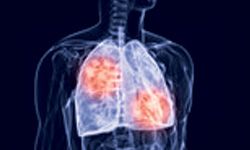Implementing Screening Can Double Survival for Patients With Lung Cancer
An easy way to double survival for patients with lung cancer is by removing the barriers to screening.

Removing the barriers to lung cancer screening, especially for high-risk populations, can double survival in patients within the next 5 years, according to a presentation by Giorgio V. Scagliotti, MD, PhD at the 2022 World Conference on Lung Cancer.1
“The time of lung cancer screening is now,” said Scagliotti, chief of the Medical Oncology Division at the S. Luigi Hospital, Orbassano (Torino), and head of the Department of Oncology at University of Torino, Italy. “We cannot wait any more and any additional time or [for] any additional evidence. Lung cancer screening offers an opportunity to drive early detection to reduce lung cancer mortality.”
Scagliotti noted that even as lung cancer care has improved, there is still a significant unmet need. The 5-year survival rate for patients with stage I or II disease is 79% and 66%, respectively, and drops significantly thereafter. However, only 38% of patients are diagnosed in those early stages.
The most recent guidelines from the US Preventive Services Task Force (USPSTF) call for annual screening with low-dose computed tomography (LDCT) for adults aged 50 to 80 years who currently smoke and have a 20 pack-year smoking history, or who have quit within the past 15 years. Screening is no longer necessary once a person has not smoked for 15 years or develops a health problem that substantially limits life expectancy or the ability or willingness to have curative lung surgery.2
Existing data shows that screening LCDT reduces mortality by as much as 20% in some cases. Nonetheless, screening rates are still low. In the United States, an estimated 1.9% of smokers eligible for screening underwent LDCT.3
“The overall benefits of lung cancer screening have been definitively underestimated,” Scagliotti said. “But what is really relevant in terms of numbers is, only in the United States of America, we can save 12,000 premature lung cancer deaths per year.”
He pointed out that there are several inequalities along the lung cancer care pathway including socioeconomic barriers and comorbidities, lack of access and/or awareness, fear of cancer, and stigma associated with tobacco use.
Scagliotti cited a recent publication from Wait et al that assessed potential barriers to lung cancer screening in Europe. Investigators identified 3 categories of barriers: capability—some patients have low awareness of the benefits of screening; opportunity—some patients may have difficulty accessing screening facilities for various reasons; and motivation—some patients may be in denial about lung cancer or harbor a distrust towards health care providers.4
Investigators suggested a variety of ways to address these concerns:
- Capability
- Explaining benefits in an appropriate format
- Providing decision aids to refer to after a prescreening appointment
- Targeted awareness initiatives to reach underserved communities
- Opportunity
- Remote linking of underserved communities with multidisciplinary teams
- Offering mobile screening in public spaces or assisted travel to screening centers
- Engaging community health professionals in outreach
- Motivation
- Personalized invitation letters from family physician
- Postal, text, or telephone reminders to attend scheduled appointments
- Codesigning awareness campaign messaging with community or faith leaders
- Taking a broader wellness approach to screening
Scagliotti said Italian physicians have already experimented with personalized letters and are working on developing multiple ways to schedule appointments. “Already, we are codesigning awareness campaign messaging with the community and with the faith leaders,” he added.
“We need to amplify the impact of lung cancer screening by integrating it into broader initiatives. …We need to ensure the full integration of lung cancer screening into the health care systems, and this is an ongoing discussion with the European Commission to make lung cancer screening among those screens that will be recommended.”
Scagliotti noted that, in Western Europe alone, there are 7 million individuals who are eligible for LDCT based on the USPSTF guidelines. To expand screening, he said physicians should rethink the need for annual screening. Data from the MILD and BioMILD studies showed that annual and biennial screening produced almost identical results.5,6 That is an important point, Scagliotti said, because most of the benefit from LCDT accrues on long-term follow-up.
He went on to say that investigators will need an updated risk stratification model that does a better job distinguishing between low- and high-risk people, particularly if one hopes to implement liquid biopsy or blood-based screening.
“We need to create a set of data in the blood, potentially, because it’s not invasive, or minimally invasive. We need to create a sort of roadmap of clinical and biological information to identify low-risk [individuals],” he said. “Obviously, based on that, we can modulate our intervention.”
References
Scagliotti G. How to double lung cancer survival within 5 years. Presented at: 2022 World Conference on Lung Cancer; August 6-9, 2022; Vienna, Austria. Abstract PL05.03.
Final recommendations: lung cancer. US Preventive Services Task Force. March 9, 2021. Accessed August 9, 2022. https://bit.ly/3zQ515o
Pham D, Bhandari S, Oechsli M, et al. Lung cancer screening rates: Data from the lung cancer screening registry. J Clin Oncol. 2018;36(15):6504. doi:10.1200/JCO.2018.36.15_suppl.6504
Wait S, Alvarez-Rosete A, Osama T, et al. Implementing lung cancer screening in Europe: taking a systems approach. JTO Clin Res Rep. 2022;3(5):100329. doi:10.1016/j.jtocrr.2022.100329
Pastorino U, Silva M, Sestini S, et al. Prolonged lung cancer screening reduced 10-year mortality in the MILD trial: new confirmation of lung cancer screening efficacy. Ann Oncol. 2019;30(7):1162-1169. doi:10.1093/annonc/mdz117
Pastorino U, Boeri M, Sestini S, et al. Baseline computed tomography screening and blood microRNA predict lung cancer risk and define adequate intervals in the BioMILD trial. Ann Oncol. 2022;33(4):395-405. doi:10.1016/j.annonc.2022.01.008